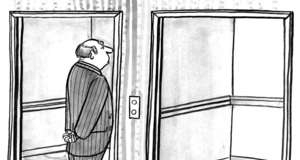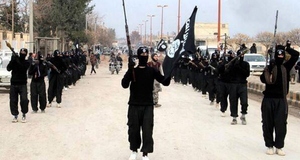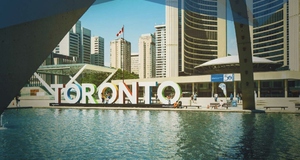From Center for Development and Strategy VOL. 2016 NO. 2Environmental Decisions in the Context of War: Bombing ISIL's Oil
By
Center for Development and Strategy 2016, Vol. 2016 No. 2 | pg. 1/1
IN THIS ARTICLE
KEYWORDS
AbstractThis paper evaluates the ethical dilemma coalition forces had to face when deciding to target and take out ISIL's primary source of revenue – oil. By gathering the impacts ISIL has had on the globe as well as the impacts aerial attacks could have on the MENA region; this paper was able to create a decision matrix that quantitatively weighs the options decision-makers had to limit further harm done on the region's society, environment, and economy. This paper serves as a baseline tool by which policymakers can quickly process the plusses and minuses of initiating attacks. Future research should investigate further into the values associated with ISIL's destruction. IntroductionSince the United States withdrawal from Iraq in 2011, the Islamic State of Iraq and the Levant (ISIL) has grown substantially. The widely designated terrorist organization garnered significant notoriety in 2014 after having committed many war crimes, human rights abuses, and children's rights violations. To counter this, a number of international military coalitions have been formed. In December of 2014, leaders from 59 countries met at NATO headquarters in Brussels, Belgium to formulate a strategy that would defeat ISIL.1 One of the core tenants of this strategy was to cut off the group's sources of financing and funding. Mission ObjectivesIn coordination with its coalition partners, the U.S. intelligence community (IC) gathered key information on the oil and gas reserves ISIL was in control of. Control of these reserves has been a primary source of revenue for the terrorist organization. However, there have been reports that decision-makers had been reluctant to the targeting of these reserves, as it could pose significant environmental risks on communities. Additionally, bombing these targets could induce long-term damage to the Middle East and North African (MENA) region's economic prosperity following ISIL's prospective defeat. This paper will review the ethical dilemma U.S. intelligence officials were faced when deciding to target these oil fields. It will provide an overview of the hazards associated with bombing ISIL's oil and gas reserves with respect to the destruction ISIL has had on the world. An analysis will be conducted using a series of options that are weighted according to their associated risks, costs, and benefits. Based on this analysis, recommendations for IC decision-makers will be made.ISIL's DamageISIL's rise and takeover of vast swaths of land across Iraq and Syria has affected the region's way of life, cultural heritage, economy, and more. In addition, ISIL's infiltration across the globe has induced numerous casualties from terrorist attacks as well as major political shifts in western nations. This section will provide a brief overview of the net impacts ISIL has had on the world. Land CaptureAfter declaring itself as a global caliphate in June of 2014, ISIL quickly captured cities and territory in northern Iraq, Libya, Nigeria, and Syria. Additionally, numerous offshoot branches of the terrorist group were established in Algeria, Egypt, Afghanistan, Pakistan, Yemen, the North Caucasus, Gaza, Chad, Niger, Cameroon, and elsewhere. Through means of war, persecution, and terrorist attacks; ISIL's land grabs have led to thousands of deaths throughout the world. Casualties of War and TerrorismAccording to U.K.-based non-profit Airwars, in over 827 days, there have been over 16,242 strikes initiated by coalition forces against ISIS.2 Airwars has estimated the minimum civilian death count as a result of these aerial attacks to be over 1,841 as of November 14, 2016.5 Additionally, after military intervention against ISIL began, the group has suffered numerous casualties. As of August 2016, the U.S. military estimated 45,000 total ISIL fighters had been killed in Iraq and Syria and 300 in Afghanistan.3,4 On the coalition side, there have been over 4,230 security fighters killed in battle.5,6 Over 17,000 civilians in Iraq and Syria have been killed by ISIL.8 There have also been a number of terrorist incidents linked to ISIL throughout the world. As of September 1, 2016, there has been 143 attacks in 29 countries that have killed over 2,043 innocent civilians.7 DisplacementIn addition to both civilian and military causalities, ISIL has displaced far more civilians through both land takeovers and war. Most notably, the displacement of over 7.6 million Syrian civilians and 3.3 million Iraqi civilians has been largely attributed to ISIL.8 Cultural DamageISIL has also destroyed many ancient historical artifacts and buildings as a form of ‘cultural cleansing'. These have included mosques, shrines, churches, ancient and medieval sites, and libraries. In Syria, six UNESCO World Heritage sites have been either been damaged or destroyed since the start of the civil war.9 Economic DamageIn a World Bank article published in October of 2016, the direct and indirect economic effects of the Syrian war and the emergence of ISIL were quantitatively evaluated on the countries in the greater Levant region. The study found that Iraq and Syria has borne the brunt of economic decline, with direct and indirect economic losses totaling 28 and 23 percent, respectively.10 Additionally, Egypt was found to have suffered economic losses of 10 percent, while Jordan lost 9 percent in total economic output.13 Environmental DamageISIL has also waged war in the MENA region through environmental destruction. In October of 2016, NASA satellites captured imagery of white plumes escaping a large sulfur plant near Mosul, which was purposefully set on fire by ISIL.11 Over 1,000 people were hospitalized and two people died as a result of breathing these sulfur fumes.12 The group has also been responsible for setting oil wells on fire, which has filled the air with black carbon and toxic fumes.13 Also in 2016, ISIL opened up oil pipelines in towns where Iraqi security forces have raided, causing floods of crude oil to spill out into streets and the Tigris river.14 ISIL's version of environmental warfare is expected to have long-lasting consequences on Iraq's resources. ISIL'S Oil ResourcesOne of ISIL's primary sources of revenue has been through its occupation, control, and exploitation of oil and gas reserves across Iraq and Syria. ISIL's rise to power; ability to recruit; and capacity to wage war was significantly affected by its control over these energy resources.15 EconomicsWhile many estimates vary, it's likely ISIL was producing between 34,00040,000 barrels per day and sold between $20-45 USD at the wellhead in October of 2015.16 This is equivalent to generating revenues of over $1.5 million per day. It's estimated that ISIL controlled over 350 oil wells in Iraq at its peak.17 In 2014, Iraqi intelligence acquired information that revealed the organization was in possession of over $2 billion in total assets, making it the world's wealthiest jihadist group.18 It's clear oil and gas has played a central role in ISIL's power and existence. According to the U.K. government, 40% of ISIL's revenues were coming from oil and gas at its peak.19 For coalition forces wishing to defeat ISIL, knocking out the resources that are critical towards ISIL's success has been an important strategic approach. Furthermore, the destruction ISIL has had on both the MENA region as well as the world gives coalition forces ample backing to decimate the terrorist group as soon as possible. However, there are a few considerations decision-makers have had to wrestle with to ensure the impacts in the region would be limited. Section 5.0 will provide an overview of the possible unintended consequences of aerial attacks on the oil and gas reserves ISIL is in control of. Aerial Attack ImpactsAerial attacks via drones and manned aircraft are often a preferred method of eliminating high-value targets by military leaders and decision-makers. However, while precision-guided munitions (PGMs) limit both collateral damage and risk to civilians, the consequences related to hitting oil and gas reserves may be more substantial. In particular, these effects involve both short-term risks to valuable resources, as well as long-term risks to the economic prosperity of the MENA region. Environmental ImpactsIn November of 2015, former deputy director of the Central Intelligence Agency (CIA), Michael Morell, stated on PBS's "Charlie Rose" the White House had been reluctant to bombing oil wells held by ISIL.20 Morell claimed this was due to the possible long-term environmental and infrastructure damages bombings would induce. Instead, Morell inferred the targeting of oil trucks as a reasonable alternative. "As ISIL continues to lose territory, it also continues to lose the money that is its lifeblood. As a result of our strikes against its oil infrastructure and supply lines, we believe that we've cut ISIL's revenue from oil by millions of dollars per month." – President Obama June 14, 2016 If coalition forces were to strike the 350 oil wells held by ISIL, environmental damage in the region could become far worse than the contamination ISIL has already inflicted on the region. While attacks on industrial infrastructure, including oil wells, are illegal per the Geneva Conventions, there have been many instances where oil has been targeted in warfare.21 In many of these events, pollution has made post-conflict recovery more difficult and instability persist longer. Air, soil, and water contamination can also inflict significant health effects on local populations. Burning oil releases toxic chemicals into the air. These can include sulfur dioxide, nitrogen dioxide, carbon monoxide, polycyclic aromatic hydrocarbons, and lead. Long-term exposure to these substances may lead to kidney disorders, liver problems, respiratory disorders, and cancer. Alarmingly, many of ISIL's oil fields are located nearby the Tigris river in Syria's eastern Deir Ezzor province.22 Groundwater contamination can imperil agricultural production, as well as ground and surface water used for drinking and domestic purposes. Food and water insecurity could therefore be increased, which could perhaps induce further unrest and conflict in the region. However, it should also be noted that before ISIL emerged in 2014, Syria and Iraq's environmental quality was already in poor condition.23 Indirect ImpactsIn addition to the potential environmental and health impacts induced by aerial attacks, Iraq and Syria would be highly susceptible to long-term decreased economic output. For example, the petroleum industry accounted for 25.1% of Syria's total revenue in 2010.24 Between 2010-2014, Syria lost over 97.5 percent of its registered volume of oil production.25 Knocking out all oil fields held by ISIL would make it considerably difficult for both Syria and Iraq to rebuild following the group's prospected defeat. Additionally, attacks that disable critical infrastructure can have further hazards on important resources. When electrical power facilities were demolished in the Gulf War of 1991, water purification and sewage treatment plants shut down, which induced outbreaks of gastroenteritis, cholera, and typhoid. This led to an estimated 100,000 civilian fatalities.26 These kinds of unintended effects are often geographically variant and unforeseeable. For this reason, the precautionary approach the White House took may have been ethically correct. To determine whether this is the case, section 5.0 will analyze the choices policymakers had on ISIL's oil and gas reserves, to minimize the most amount of damage possible. AnalysisIn order to deduct the most viable option for the IC, its coalition partners, and White House policymakers, a decision matrix was constructed that accounts for the total amount of social, environmental, and economic value that would be destructed in the aftermath scenario of each choice. MethodologyVariables were weighted according to their importance on a scale between 0-5. Next, the risked amount of damage inflicted upon each variable, according to each option, was scored between 0-10. These values were then multiplied across, resulting in a net score. The best option for decision-makers to choose from is the lowest net score. The social values category is based on ISIL's forecasted ability to grab more land, kill more people, displace more civilians, and destroy more relics following each option's implementation. The environmental values category is based on both ISIL's ability to wage further environmental destruction as well as the risks of unintended environmental damage following each option's implementation. Lastly, the economic values category is based on both ISIL's further economic effect on the region as well as the risks of unintended economic damage following each option's implementation. The first option, ‘don't strike', is the IC's business-as-usual scenario. This would not involve any targeted strikes on ISIL's oil and gas reserves. The second option, ‘strike', would involve the active deployment of PGMs directly towards oil and gas fields. The third option, ‘alternative strike', would involve the active deployment of PGMs and/or aerial gunfire towards petroleum transportation vehicles, as opposed to oil and gas fields directly. RecommendationsBased on this paper's analysis, the best option for military and intelligence decision-makers to choose, would be to target ISIL's petroleum transportation vehicles. This option would pose 26 percent less risk towards the social, environmental, and economic elements of society in Iraq and Syria than not deploying any PGMs at all. The ‘alternative strike' option also poses 18 percent less risk than deploying PGMs directly on oil and gas fields. It's therefore recommended that intelligence, military, and White House decision-makers go ahead with the direct bombing of ISIL's transportation vehicles containing oil and/or gas. Endnotes
Suggested Reading from Inquiries Journal
Inquiries Journal provides undergraduate and graduate students around the world a platform for the wide dissemination of academic work over a range of core disciplines. Representing the work of students from hundreds of institutions around the globe, Inquiries Journal's large database of academic articles is completely free. Learn more | Blog | Submit Latest in Political Science |


















